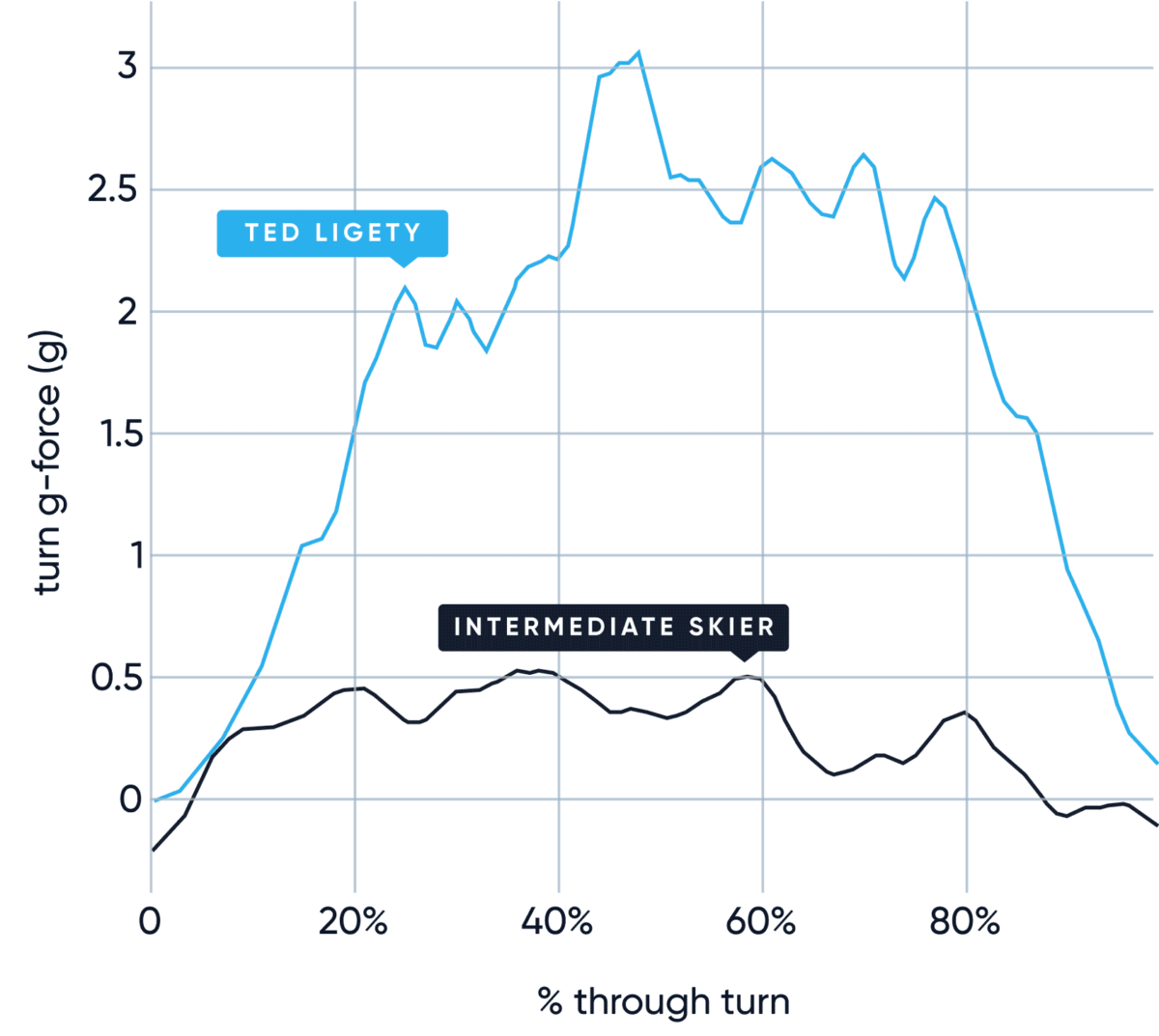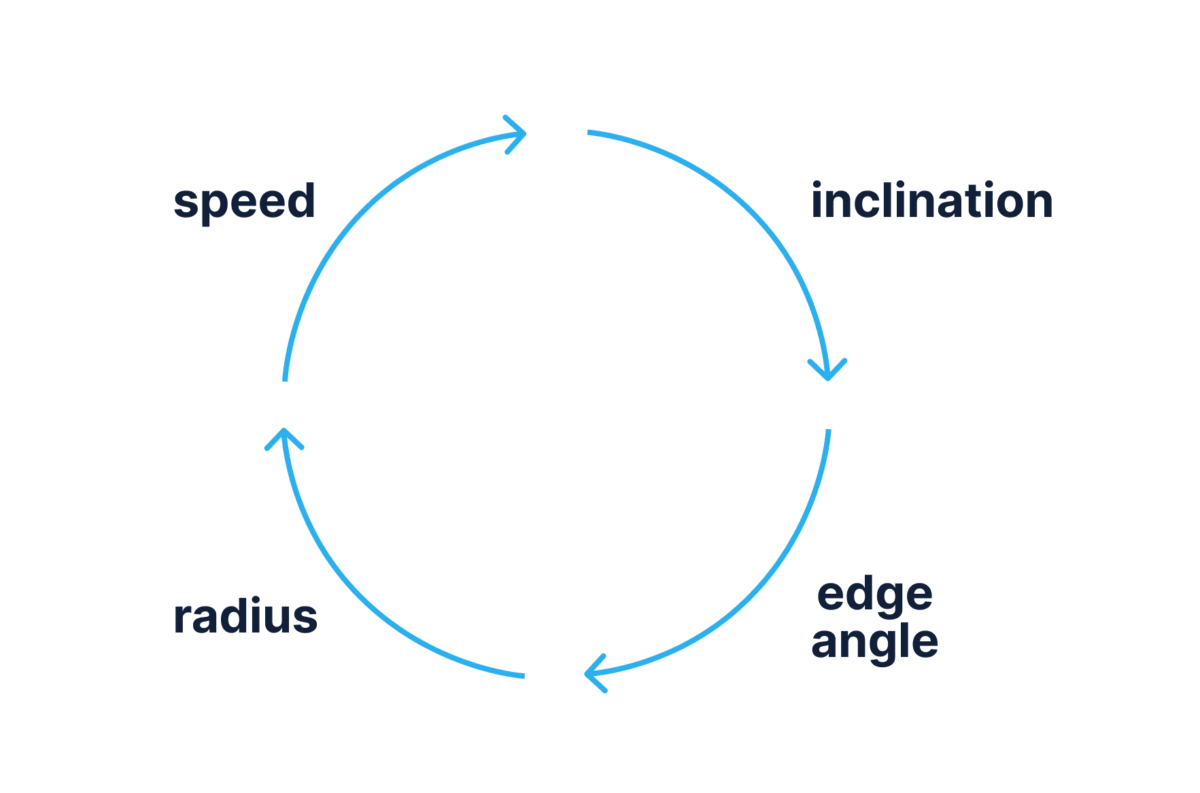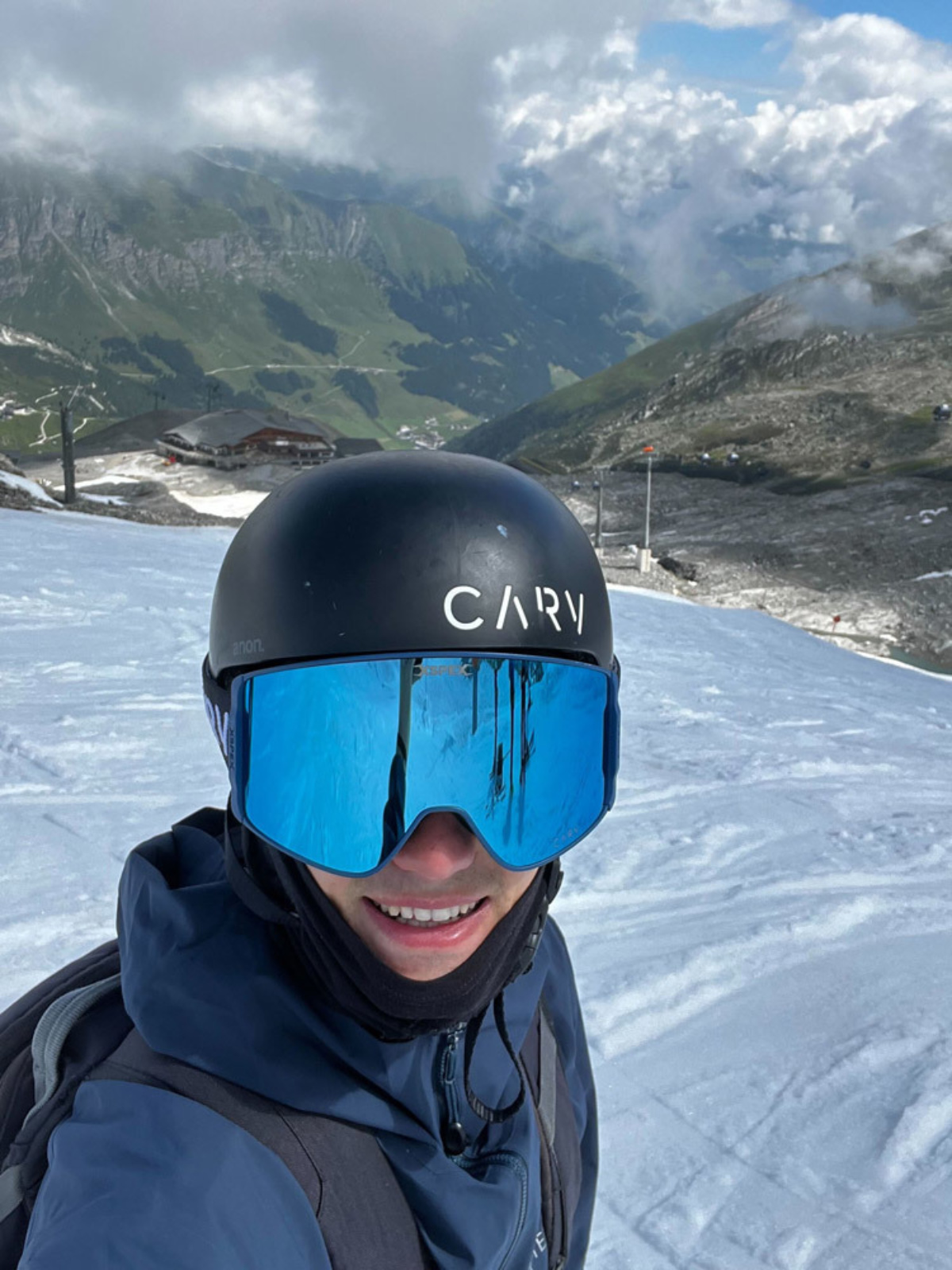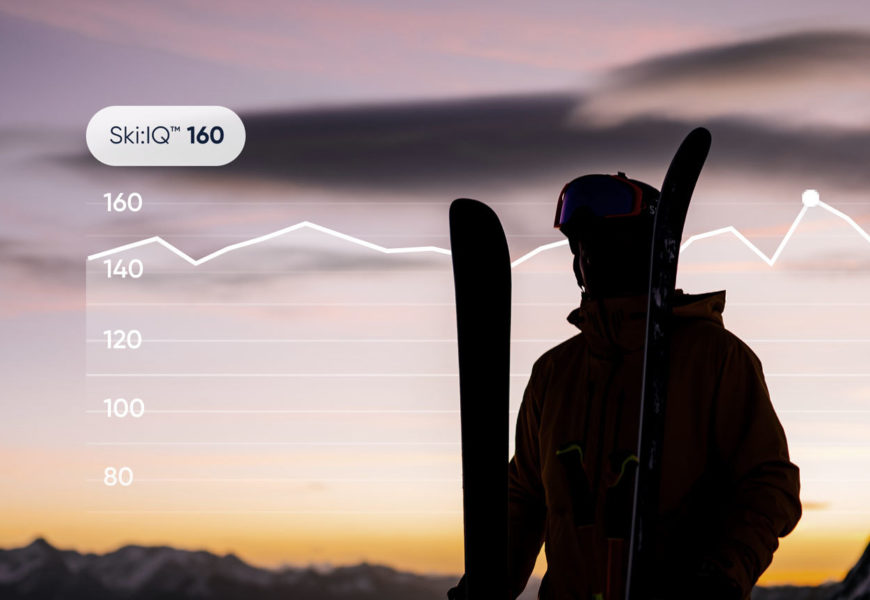G-Force: Our Latest Metric

Votes:
What do skiing, Nascar racing, and riding a rollercoaster all have in common?
They share one magic ingredient that gets us hooked. That stomach-flipping feeling that spikes our adrenaline - and it’s not just acceleration or speed, although they definitely play a part. When carving on snow, it’s the feeling best achieved when you pull fast and tight radius turns on a steeper slope.
That feeling is caused by G-Force. To pull a lot of G's when carving requires strength, skill, and a whole lot of confidence to withstand the forces created. So much so, that G-Force alone is an incredibly accurate indicator of a skier’s Ski:IQ.
This season, we are introducing a G-Force metric. Think of it like the fun of a ‘speed’ metric but with much more skill required to do well. Good luck gaming this one!
How is G-Force at play in skiing?
If you've ever been in a go-kart, you might be familiar with the surprisingly achy abs that come from repeatedly racing around tight corners. During your ski turn, these same forces are at play, requiring strength to manage.
The force you experience when carving a turn is technically called the centripetal force. If you think about spinning a ball on a string, the centripetal force is the force that’s required to turn the ball in a circular motion. This force causes tension in the string, and if the tension is lost (e.g. the string breaks) the ball will fly off in a straight line. A more gruesome analogy can be found in ski racing. If you were to wipe out at speed coming into a turn, you’re likely to continue to travel in the direction you were going when you fell.
When you make a successful turn, you are creating the centripetal force which you balance against on your outside ski. Technically, this force is the acceleration multiplied by the mass of the skier. The better skiers we become, the more force we are able to stand up against - particularly as we carve onto steeper terrain, executing closed shorter radius turns at a higher edge angle in order to control our speed.
Turning at low speeds and with a long radius leads to a low G-Force - this could be because the terrain is very mellow or because you are skiing in a more relaxed style, not bending the ski actively - something called ‘park and riding’.

Meanwhile, if you’re carving steeps at a short radius, you’re going to be racking up a much higher G-Force - like in Ted’s turn in the graph below.

The link between G-Force and Technique
G-Force is an invisible (and often ignored) link between fundamental elements of our technique. It’s important because understanding the physics of the turn is key to understanding not just what you should be doing, but why you’re doing it.

When we ski, we learn to turn to control direction and speed - but often we don’t learn how much we can play with turn shape.
As we progress, we start to control what kind of turns we make. We can do long radius, relaxed turns, which do not create much G-force, or we can really work the ski - rolling it over, bracing against it, and bending it to create a tight radius with a lot of G-force!
In this way, your speed, edge angle, turn shape, and the resulting G-force generated, are closely interlinked.
Due to the curved design of the ski, by adjusting your edge angle you can adjust your turn radius. As you crank up your edge angle, and the turn radius decreases, the G-Force of your turn will increase.
But to do this you need enough speed. If you’ve ever tried to ‘game’ Ski:IQ by laying it over on a green run, we’ll bet you risked straight-lining it first! As you go faster, the centripetal force increases, meaning you can incline more (toppling into the turn) without losing pressure on your outside ski. If you are skiing slower but incline the same amount, your topple will become more of a fall!
Going faster on steeper slopes means you can incline further into the turn, and get higher edge angles, which can in turn shorten the radius of your turn, and generate a higher G-force as a result.

So why are we including G-force in Carv? It’s a great factor to think about when considering the related elements of your technique - from speed to radius and edge angle. It’s also just fun to think about how many G’s you can pull while skiing.
Here is a useful comparison to get you started when you get on snow with Carv’s G force metric.
1G is the normal force of gravity. So if you get to 2G - your body is experiencing twice the force of normal gravity - due to your skiing.
At 1.5G you will have that feeling you get when you’re pulled into your seat when on an aeroplane is taking off - that is around 1.5G
At 2.5G's you’ll start to feel ‘heavy limbs’
At 3G, you’re at around the G force of a space shuttle upon take off - and if sustained, you can actually black out. We normally only experience 3G's for a split second - like sneezing!
An F16 fighter jet will often pull 4.5G's.
And because you’re thinking it, the most G ever survived was Indycar driver Kenny Bräck (SWE) who survived a split-second deceleration of 214G during a 220‑mph (354‑km/h) crash in 2003.
How many G’s can you pull in a ski turn? Send us a screenshot next time you’re on snow.
Finding the Force - behind the scenes of how we built it
Knowing all we do now about the correlation between G’s and high-performance turns, we’d love to say this metric was born from careful theorisation and testing. But, like all the best things, it was a happy accident of experimentation.
Jamie, our VP of Engineering, led an experimental machine learning project to calculate as many ski metrics as possible using the data that we collect. This resulted in about 500 combinations of different mathematical calculations, which he then tested by trying to use them to predict Ski:IQ. It turned out that G-Force was incredibly closely correlated with Ski:IQ - which makes sense in light of all we know about high-performance carving.
Encouraged, the Data Science team went away to turn this into a proper metric. They managed to isolate lateral acceleration in the turn - aka. the acceleration experienced due to the turning force that you are producing. With this, the metric was deemed accurate enough to use as a monitor - so you can hear your G-Force on a turn-by-turn basis. Charlie, our Data Scientist, has just been out testing it on the glacier.

May the G-Force be with You
Our mission is to help skiers have more fun by improving their technique. So, for any new feature we introduce, one of the biggest tests is enjoyability! Last year, this was incredibly important to us when designing Train with an Olympian - a training programme where working up through the levels and getting positive ‘dings’ on turns you pass. It made developing your carving an addictive game. With G-Force, we believe we’ve found another opportunity to make high-performance carving even more fun.
A higher G-force can be achieved on steeper slopes, and so improving your G-Force metric will mean being encouaged to venture out of your comfort zone which Ski:IQ typically hasn’t rewarded enough. Scoring well on the G-Force monitor feels like making exciting turns that push you to your limits, and we hope it helps give you a nudge to break out of your plateau.
If we travel back in time to BC (Before Carv), when we wanted to challenge friends or push ourselves we often resorted to racing. Ski Patrol would hate us, and as we know from our own un-just losses, speed might be fun but it is a terrible determinant of skill.
As we’ve seen, creating a high G-Force is the result of speed, skill, and strength. With this new metric, we think we’ve found something that encourages you to push yourself without compromising technique or safety, so you can get more of the thrilling carving we all love.



